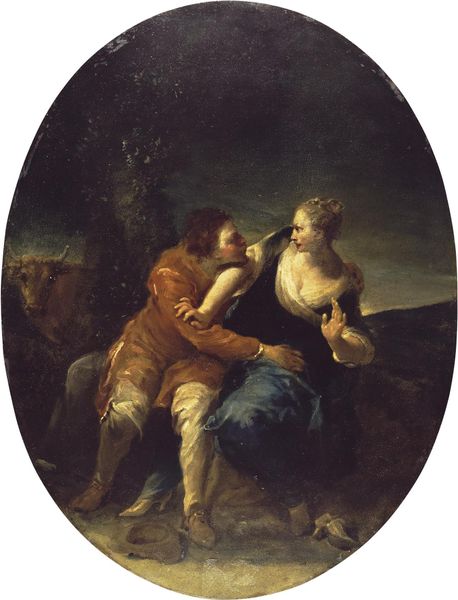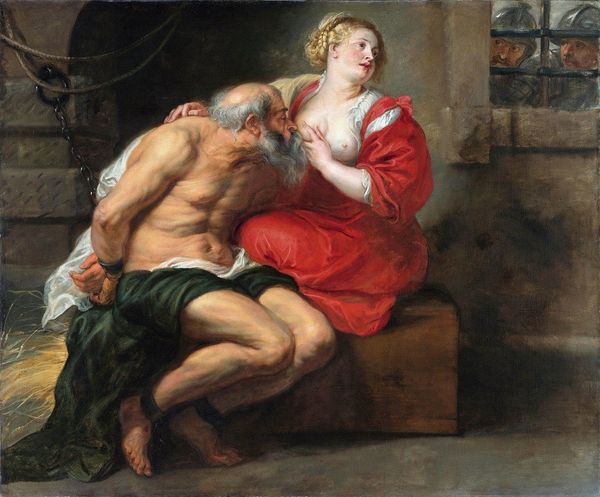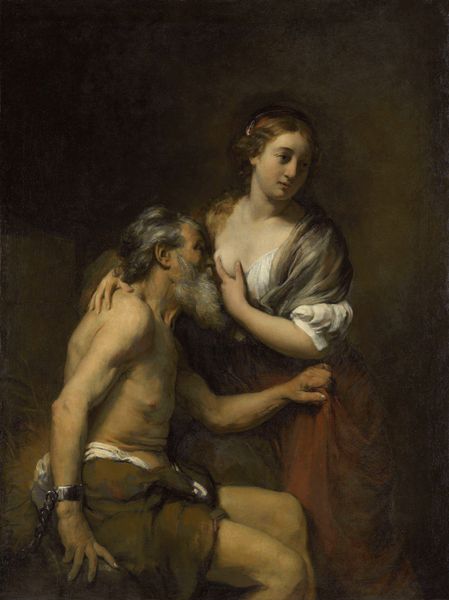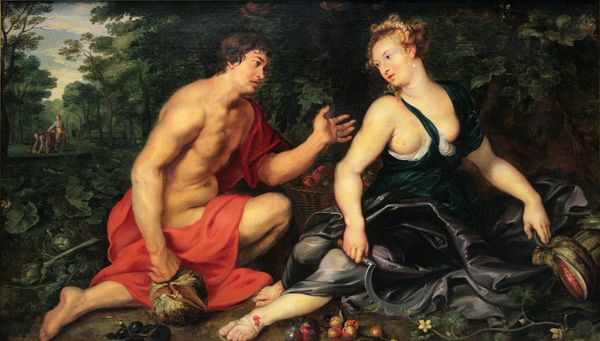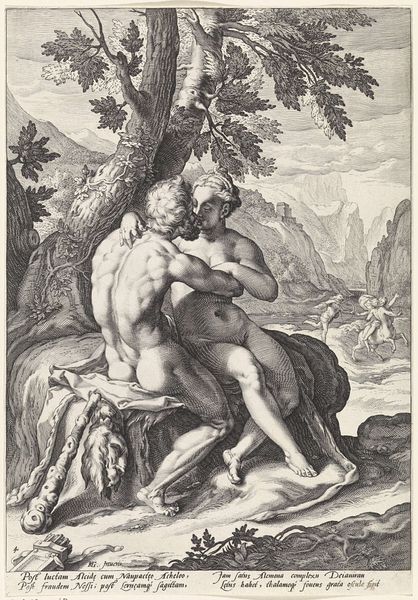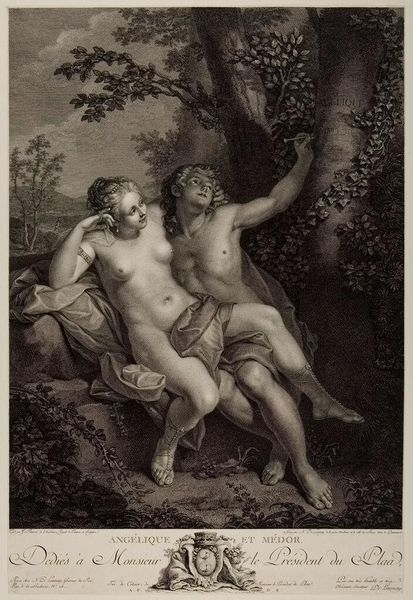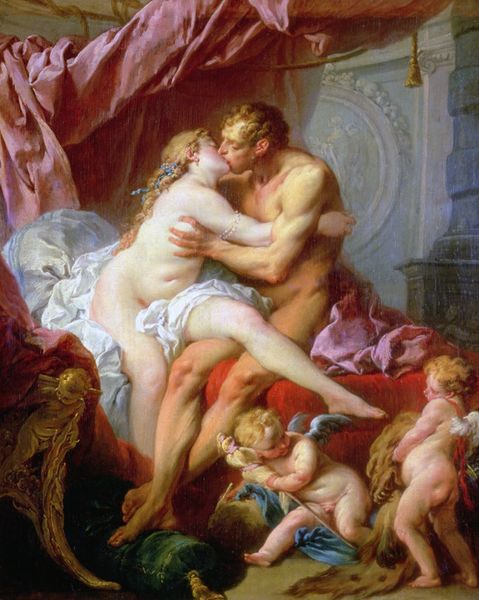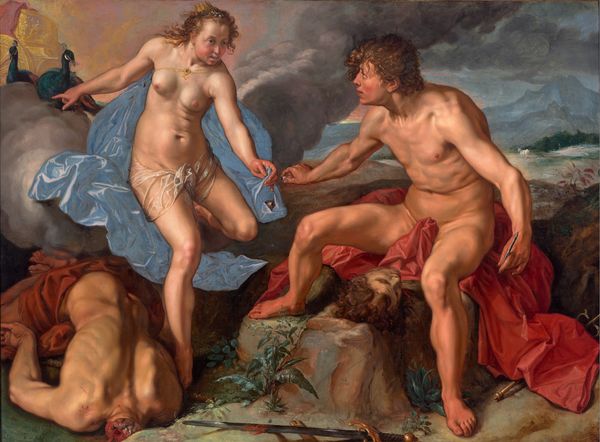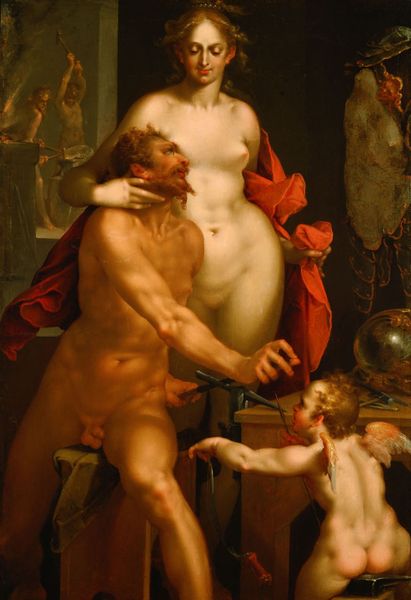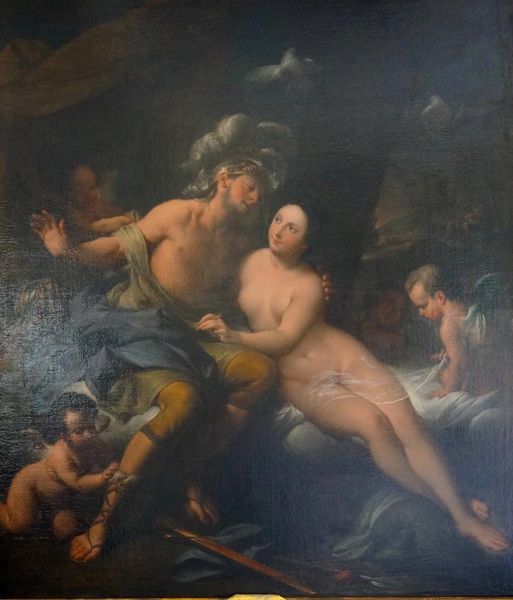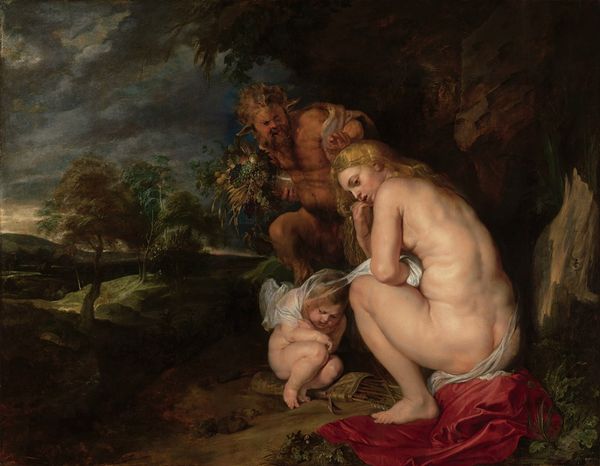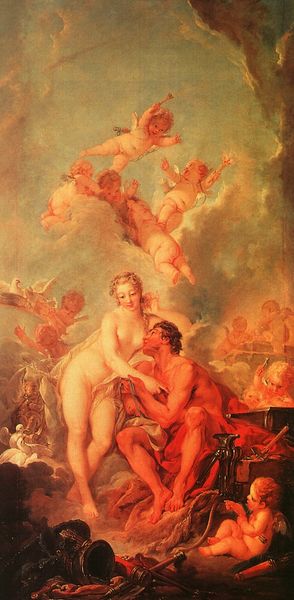
#
possibly oil pastel
#
oil painting
#
acrylic on canvas
#
underpainting
#
mythology
#
human
#
painting painterly
#
animal drawing portrait
#
portrait drawing
#
facial portrait
#
portrait art
#
fine art portrait
Dimensions: 114 x 91 cm
Copyright: Public domain
Curator: Here we have Peter Paul Rubens' "Pastoral Scene" from 1638, currently housed at the Hermitage Museum in St. Petersburg. Editor: Ah, Rubens! It’s so him, isn’t it? Immediate feeling? A very dramatic—perhaps a touch unsettling—embrace. Almost frantic, you know? Curator: I agree about the intensity. What interests me is how it encapsulates power dynamics—the male figure dominating the space, while the woman seems... less than willing, though not entirely distressed. It really sparks questions about the gaze, and consent. Editor: Absolutely! She's got this sort of half-smile, half-"Oh dear, here we go again" look. The lighting also plays tricks – everything around them is so murky, and they are the focal point. Like they are performing in the forest. Is it all for the gaze? Is anyone else there? I think Rubens plays with this intentionally. Curator: It definitely does! We have to think about the mythology behind such images as well, of course. Perhaps a Bacchic revel or some form of erotic mythologizing which puts even greater emphasis on ideas about freedom from social restrictions, intoxicating forces and power… But the potential coercion implied makes you want to excavate these figures out of artistic license. Editor: It’s uncomfortable. The saturation of her skin is stark in comparison to the shadow he throws across her dress. She looks like she's trying to lighten the mood even as she shrinks from his arms. Her reaction—or perceived reaction—says more about the climate surrounding acceptable behavior between the genders than necessarily a portrait of a mythological abduction itself. It transcends beyond the boundaries of mere pictorial representation and touches the realm of social commentary, wouldn’t you say? Curator: Precisely. That discomfort is generative, revealing historical power structures and challenging our contemporary assumptions about representation, desire, and artistic license. Editor: The way Rubens uses these dramatic shifts in tone makes me want to investigate how my reading of this embrace mirrors something that can transcend these painterly themes and be reflected in broader experiences. So, despite initial hesitation, I really feel a push-and-pull between historical context, what’s depicted, and our evolving ethics. Curator: Exactly. It's that interplay between history and our present that makes Rubens so continually relevant and such images perennially thought-provoking.
Comments
No comments
Be the first to comment and join the conversation on the ultimate creative platform.

